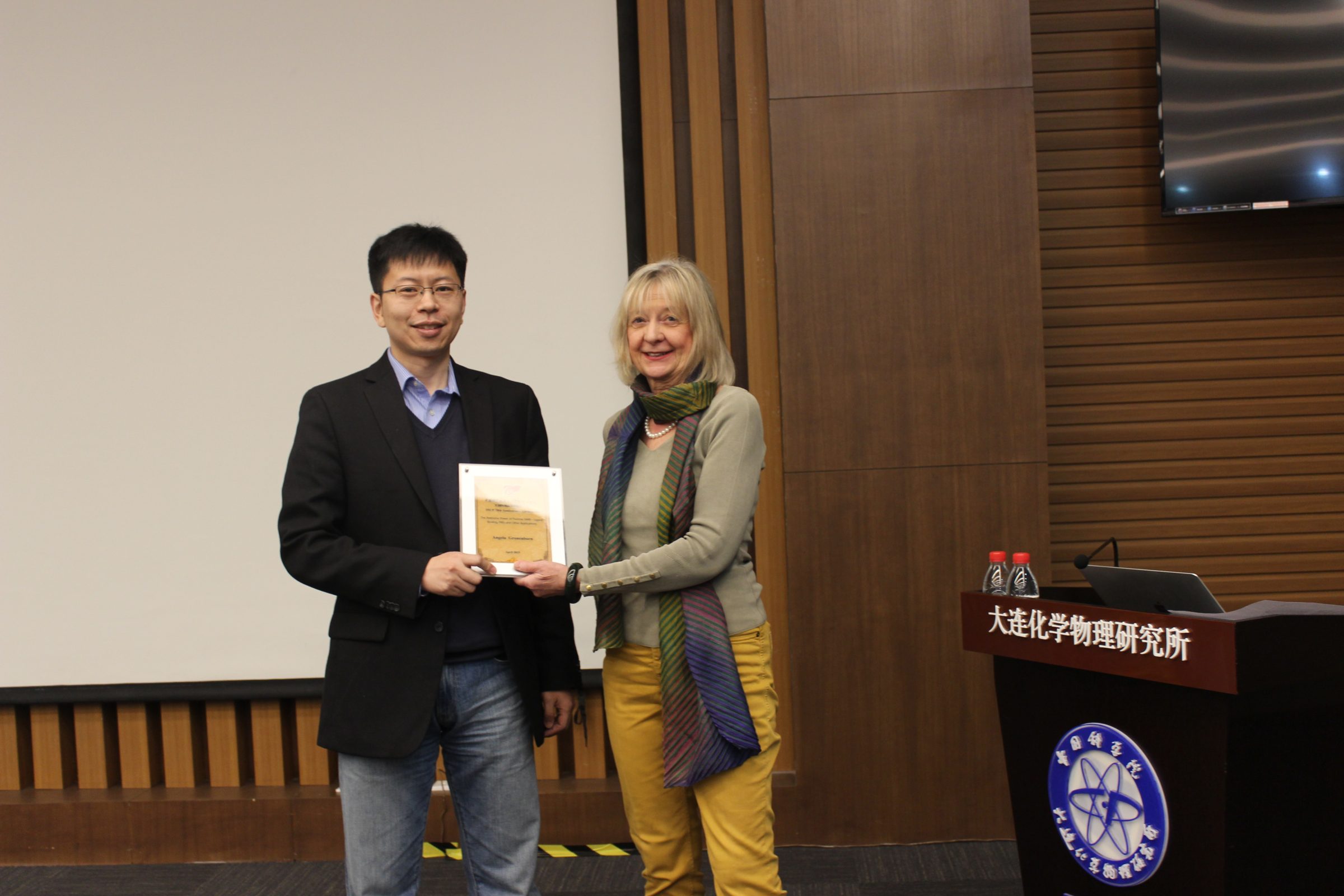The Awesome Power of Fluorine NMR – Ligand Binding, PREs and Other Applications
Angela M. Gronenborn,University of Pittsburgh,Pittsburgh
(17th Lecture of DICP 70 Years' Anniverary)
Abstract:
19F NMR is a powerful and versatile tool to study protein structure and protein–ligand interactions due to the favorable NMR characteristics of the 19F atom, its absence in naturally occurring biomolecules, and small size. 19F atoms can be introduced readily into proteins and ligands, permitting to use them as 'beacons' to study interactions by NMR. Both, ligand and protein resonances can be exploited for this purpose. I will discuss several applications, involving 19F-modified proteins and 19F-containing ligands, demonstrating the awesome power of 19F NMR.
Prof. Angela Gronenborn, a member of National Academy of Science of United States, is currently the Chair of Department of Structural Biology at the School of Medicine in University of Pittsburgh, and also the director of Pittsburgh Center for HIV Protein Interactions. Prof. Gronenborn received her B. Sc. and Ph.D degrees from University of Colognein 1972 and 1978, respectively, and then she joined National Institute for Medical Research in London till 1984. In 1984 Dr. Gronenborn moved to Max-Planck Institut für Biochemieas the head of the Biological NMR Group. From 1988 to 2005, Dr. Gronenborn had worked in National Institute of Health (NIH) as a Senior Investigator, and Chief of Structural Biology Section. She was appointed as a full professor of University of Pittsburghin 2005. Angela Gronenborn's research combines nuclear magnetic resonance (NMR) spectroscopy with biophysics, biochemistry, and chemistry to investigate cellular processes at the molecular and atomic levels in relation to human disease. We presently focus on two areas in biology: gene regulation and HIV pathogenesis. Due to the great contribution to science research in NMR spectroscopy, Prof. Gronenborn was elected as a member of National Academy of Science (US) in 2007, and a member of Academy of Science (Germany) in 2014.Till now, Prof. Gronenborn has published more than 500 articles in peer-reviewed journals.
